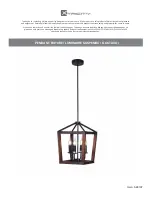
D.Measuring Insulation Resistance
Danger
Make sure to check with a high voltage detector that there is no electrical charge exists
on the circuit under test.
Be sure to put on a pair of insulated gloves for high voltage.
Be extremely careful not to get electric shock during insulation resistance
measurement and “PRESS TO TEST” button is being pressed as high voltage is present on
the tip of test leads and on the circuit under test continuously.
Do not make measurement with the battery cover removed.
Do not make measurement when thunder rumbling.
Be sure to connect the earth CORD (black) to the Earth terminal of the circuit under
test.
Caution
When the live circuit warning is indicated “>30V”
or the warning buzzer sounds and LCD display flash
“
” measurement cannot be
made even if “PRESS TO TEST” button is pressed.
To check the insulation of electric equipment's or electric circuits, measure their
insulation resistance with the instrument.
Be sure to check the voltage which can be applied to the equipment under test before
making a measurement.
Note:
Insulation resistance value of the equipment under test may not be stable, and the
indication may be unstable.
Beep sound may be heard during insulation resistance measurement. But it is not a
malfunction.
It takes time to measure capacitive load.
At insulation resistance measurement, positive (+) voltage is
outputted from the Earth terminal and negative (-) voltage is
outputted from the Line terminal.
Connect the earth cord to the Earth (ground) terminal. It is
recommended to connect the positive (+) pole to the earth
side when measuring insulation resistance against the ground or when a part of the
equipment under test is earthed. Which this connection, smaller measured value can be
obtained comparing with other way round.









































